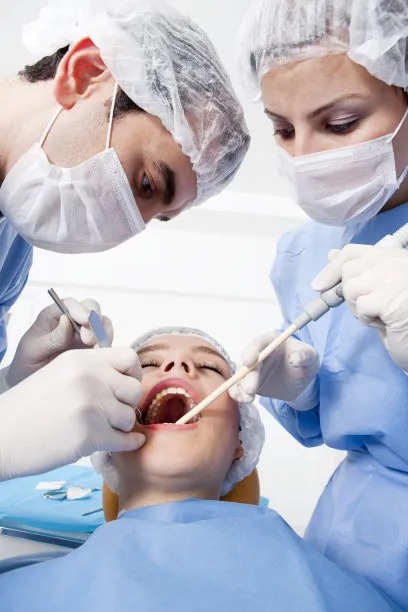The Essential Guide to Extracting a Tooth Safely and Minimizing Pain for a Smooth Recovery
Summary: Tooth extraction is a necessity for many when dental issues arise. However, the process can often be intimidating due to fears about pain and complications. This guide presents essential tips for safely extracting a tooth while minimizing pain and ensuring a smooth recovery. From choosing the right dental professional to post-extraction care and pain management techniques, each aspect is crucial to achieving optimal results. By understanding these four key areas, patients can feel more empowered and informed about their dental health journey.
1. Choosing a Qualified Dental Professional

The first step in safely extracting a tooth is selecting a qualified dental professional. It’s essential to seek a dentist or oral surgeon who is experienced in tooth extractions to minimize risks. Look for professionals with good reviews from previous patients, which can be found online or through trusted referrals. Credentials, certifications, and a comfortable office environment are also important factors in this decision.
During the initial consultation, it is crucial to openly communicate your concerns and medical history. This allows the dental professional to assess your situation thoroughly and choose the best extraction method. Each patient’s needs are different, and an experienced dentist will tailor their approach to ensure safety and comfort throughout the process.
Lastly, the equipment and facilities used by the dental professional should meet satisfactory health standards. Modern tools and technology can lead to quicker, less painful procedures, thereby enhancing the overall extraction experience.
2. Preparing for the Procedure
Preparation for a tooth extraction involves various steps that can help ease the process. Firstly, discussing sedation options is vital. Many dentists offer sedation, either local or general, which can help alleviate anxiety and discomfort during the procedure. You should discuss which options are suitable for you and what to expect during the process.
Another key aspect is understanding pre-procedure instructions. Patients may be advised to avoid certain medications, especially blood thinners, before the extraction due to their potential to increase bleeding. Additionally, knowing the dietary guidelines, such as fasting before anesthesia, is essential for avoiding complications.
Lastly, having a recovery plan in place is beneficial. Arrange for someone to accompany you to and from the appointment, as the effects of sedation may impair your ability to drive. This ensures a smoother transition back home after the procedure, allowing you to focus solely on recovery.
3. Effective Pain Management After Extraction
Pain management is critical after a tooth extraction to ensure a smoother recovery. Over-the-counter pain relievers such as ibuprofen or acetaminophen are commonly recommended. It’s imperative to follow the dosage instructions provided by your healthcare professional to minimize pain without overdose risks.
Cold compresses are also beneficial to manage swelling and discomfort post-extraction. Applying a cold pack to the outside of the cheek can reduce inflammation and numb the area, providing quick relief. Ensure to wrap the cold pack in a cloth to protect your skin from frostbite.
Staying hydrated and following a soft diet is equally crucial during recovery. Foods like yogurt, mashed potatoes, and smoothies can provide necessary nutrition without further irritating the extraction site. Avoiding hot, spicy, or hard foods is essential to prevent increased pain and prolong healing time.
4. Importance of Follow-Up Care
After a tooth extraction, follow-up care is often overlooked but is vital for a proper recovery. Most dental professionals schedule a follow-up appointment within a week after the procedure to monitor the healing process. This appointment allows the dentist to identify any potential complications early on and address concerns about pain or swelling.
Additionally, regular oral hygiene is important, though it must be approached with caution. Gently rinsing the mouth with warm salt water can help keep the extraction site clean without hard brushing that may disturb the healing tissue. Following specific oral care instructions given by your dentist is crucial in minimizing the risk of infection.
Finally, recognizing signs of complications, such as prolonged bleeding, severe pain, or fever, is critical. Contacting your dental professional immediately if these symptoms occur helps ensure prompt treatment and a full recovery.
Summary:
Understanding the essential aspects of tooth extraction—from choosing a qualified professional to managing post-extraction care—can make the difference between a routine procedure and a distressing experience. By being informed and proactive, patients can protect their dental health and ensure a smooth recovery.
This article is compiled by Vickong Dental and the content is for reference only.


